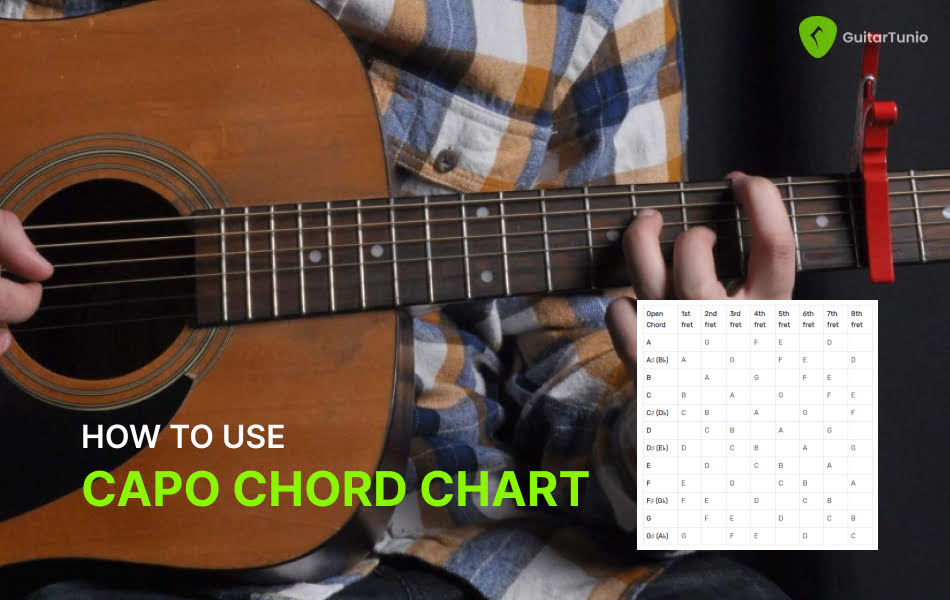The capo is a versatile tool that has revolutionized the way guitarists approach their instrument. By employing a capo, players can easily change the pitch of their guitar without altering the fingering patterns of chords. But, figuring out which fret to place your capo on can sometimes be confusing. The article gives you a guitar capo chord chart to help you easily determine where to place your capo for the desired sound.
Capo chord chart
To navigate the capo’s potential, a capo chord chart is an indispensable tool. The chart lists the capo positions in relation to the guitar’s open position, along with the corresponding chords when using the capo. For example, placing the capo on the 3rd fret and playing an open E chord shape will produce an F# chord. By following the chart, musicians can quickly identify the appropriate chord shapes for any given capo position, making transposition a breeze.

Using the guitar capo chart
The guitar capo chart serves two purposes, both of which will assist you in getting the most out of your capo in your guitar playing.
Function 1: Play a song in the original key, but with simpler chords
If you’ve ever tried to play a song, but have been thwarted by the array of complex chord shapes you’re presented with, this is the function for you.
You only need to complete the following:
- In the capo chart’s far left column, look for the root of the chords you’re trying to play.
- Find a fret number in the right column that allows you to play all of the chords in the original key using open chords. (The type of chord doesn’t matter. If you’re playing A minor for example, you just need to find A).
- Place your capo at that fret and play the chords in the column underneath (they’ll sound like the equivalent chords in the left-hand column with the capo in place).

Function 2: Figure out the chords you’re playing when using your capo.
If you place a capo someplace on the neck of the guitar and play the same chords as you would without a capo, you’re playing different chords even if the chord forms remain the same. To determine the chords you are playing, do the following:
- Look at the top row of the chart to find the fret where the capo is.
- Look down the corresponding column until you find the chord shape that you’re playing. (As with function one, the type of chord doesn’t matter. For D minor, you just need to find D, etc.).
- Use the left-hand column to identify the chord you’re actually playing.
Now that you’ve worked out what you’re actually playing.
By utilizing a guitar capo chart, guitarists can confidently transpose chords, accompany singers in different keys, experiment with alternative tunings, and unlock new musical possibilities with ease and accuracy. It serves as an essential tool for understanding the relationship between capo positions and chord formations, ultimately enhancing the guitarist’s versatility and creativity.
Note: The capo may slightly alter the guitar’s intonation, so don’t forget to check the tuning of each string and make adjustments with a guitar tuner if necessary.
